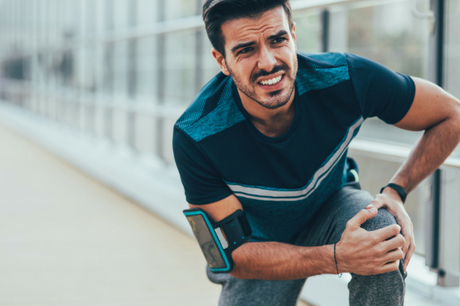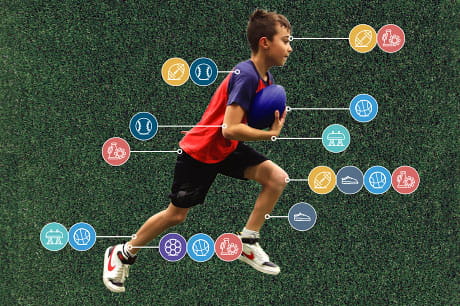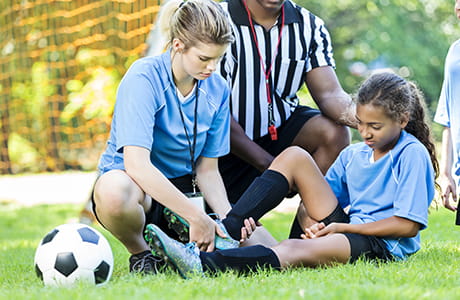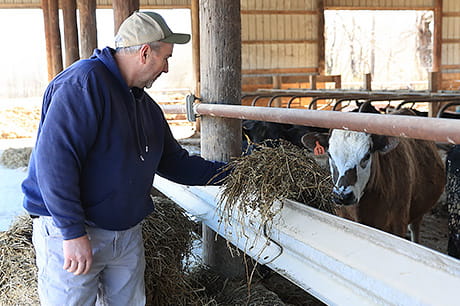Four common summer sports injuries and how to avoid them
,
Tips for keeping summer fun safe
With summer finally upon us, it’s time to get outside. As the whole family begins to shake loose and get back to their favorite recreational activities, it’s important to keep an eye on safety at all times.
Here are a few of the most common summer sports injuries and ways you can avoid them.
Sprains and Strains
Almost all of us have experienced a sprain or strain at some point, whether it be a pulled hamstring, sore shoulder or sprained ankle. Though these common injuries are similar, they aren’t interchangeable.
“A sprain involves the stretching or tearing of your ligaments, while a strain is the stretching or tearing of your muscles or tendons,” said Geisinger Community Medical Center orthopaedic surgeon Shazad Shaikh, M.D., who is the head doctor for the Scranton/Wilkes-Barre RailRiders. “All three are types of tissue, but have different functions in the body.”
Both strains and sprains can be prevented with proper stretching before physical activity or exercise. This makes the muscles, tendons and ligaments more flexible and less prone to tears.
Minor sprains and strains can be treated at home with ice and an over-the-counter anti-inflammatory like ibuprofen. In more severe cases, your doctor may recommend a temporary brace or even surgery.
Bone Fractures
Bone fractures are very common; there are millions of cases every year in the United States.
“Think of a bone like a tree branch,” said Dr. Shaikh. “They can take a beating, but with enough force like with heavy snow or wind they may finally break.”
But not all fractures are the same. There are a handful of different classifications, organized by severity and the type of break. For example, a transverse fracture occurs when a bone is broken straight across, and an oblique fracture is when the break is diagonal.
While accidents happen and sometimes there’s no avoiding a fracture, you can help to strengthen bones with proper diet and exercise. Diets rich in Vitamin D and calcium promote bone health, while weightbearing exercise strengthens the bones.
Muscle Cramps
Cramps are every athlete’s enemy. This sudden, involuntary contraction of one or more muscles can happen without warning, especially when doing strenuous physical activity.
Muscle cramps have a variety of causes, including overuse, strain and improper diet, but can also be caused by dehydration—a common condition in the summer heat.
“Be sure to drink plenty of water while involved in physical activity, in addition to the recommended 15.5 cups a day for men and 11.5 cups for women, to keep yourself from cramping,” said Dr. Shaikh.
Water also has numerous other health benefits to make each drop a little more refreshing.
Concussions
Concussions are traumatic brain injuries that come as a result of a sudden impact, causing the brain to shake within the skull. The condition’s prevalence in professional sports has captured the public’s attention over the past several years.
“Although certain sports—football, soccer and hockey—are most associated with the condition, concussions can happen in any type of sport or recreational activity where there is impact,” said Dr. Shaikh.
Symptoms of a concussion include drowsiness, headache, memory loss, balance problems and nausea. The key to healing is rest for a specific period of time recommended by your doctor, though symptoms can persist for weeks to months. Your doctor may also recommend an MRI or CT scan if further evaluation is needed.
Dr. Shazad Shaikh, an orthopaedic surgeon, sees patients at Geisinger Orthopaedics and Sports Medicine Scranton, 3 West Olive St., Scranton. To schedule an appointment, call 800-275-6401.
Here are a few of the most common summer sports injuries and ways you can avoid them.
Sprains and Strains
Almost all of us have experienced a sprain or strain at some point, whether it be a pulled hamstring, sore shoulder or sprained ankle. Though these common injuries are similar, they aren’t interchangeable.
“A sprain involves the stretching or tearing of your ligaments, while a strain is the stretching or tearing of your muscles or tendons,” said Geisinger Community Medical Center orthopaedic surgeon Shazad Shaikh, M.D., who is the head doctor for the Scranton/Wilkes-Barre RailRiders. “All three are types of tissue, but have different functions in the body.”
Both strains and sprains can be prevented with proper stretching before physical activity or exercise. This makes the muscles, tendons and ligaments more flexible and less prone to tears.
Minor sprains and strains can be treated at home with ice and an over-the-counter anti-inflammatory like ibuprofen. In more severe cases, your doctor may recommend a temporary brace or even surgery.
Bone Fractures
Bone fractures are very common; there are millions of cases every year in the United States.
“Think of a bone like a tree branch,” said Dr. Shaikh. “They can take a beating, but with enough force like with heavy snow or wind they may finally break.”
But not all fractures are the same. There are a handful of different classifications, organized by severity and the type of break. For example, a transverse fracture occurs when a bone is broken straight across, and an oblique fracture is when the break is diagonal.
While accidents happen and sometimes there’s no avoiding a fracture, you can help to strengthen bones with proper diet and exercise. Diets rich in Vitamin D and calcium promote bone health, while weightbearing exercise strengthens the bones.
Muscle Cramps
Cramps are every athlete’s enemy. This sudden, involuntary contraction of one or more muscles can happen without warning, especially when doing strenuous physical activity.
Muscle cramps have a variety of causes, including overuse, strain and improper diet, but can also be caused by dehydration—a common condition in the summer heat.
“Be sure to drink plenty of water while involved in physical activity, in addition to the recommended 15.5 cups a day for men and 11.5 cups for women, to keep yourself from cramping,” said Dr. Shaikh.
Water also has numerous other health benefits to make each drop a little more refreshing.
Concussions
Concussions are traumatic brain injuries that come as a result of a sudden impact, causing the brain to shake within the skull. The condition’s prevalence in professional sports has captured the public’s attention over the past several years.
“Although certain sports—football, soccer and hockey—are most associated with the condition, concussions can happen in any type of sport or recreational activity where there is impact,” said Dr. Shaikh.
Symptoms of a concussion include drowsiness, headache, memory loss, balance problems and nausea. The key to healing is rest for a specific period of time recommended by your doctor, though symptoms can persist for weeks to months. Your doctor may also recommend an MRI or CT scan if further evaluation is needed.
Dr. Shazad Shaikh, an orthopaedic surgeon, sees patients at Geisinger Orthopaedics and Sports Medicine Scranton, 3 West Olive St., Scranton. To schedule an appointment, call 800-275-6401.

Content from General Links with modal content












